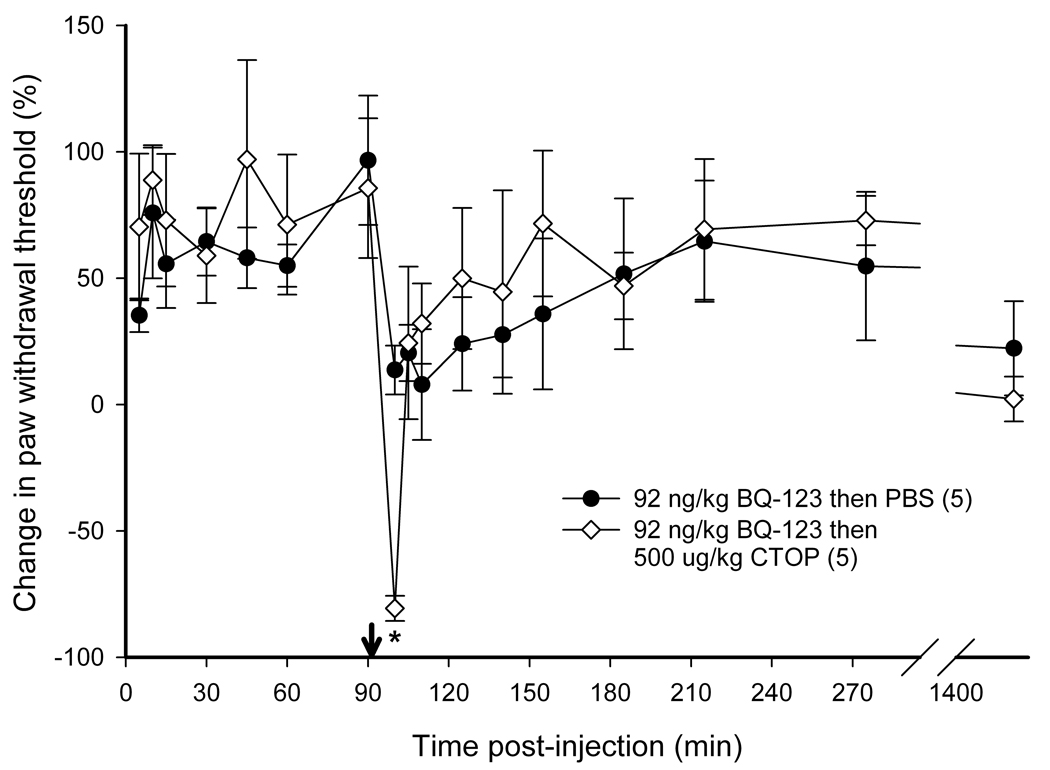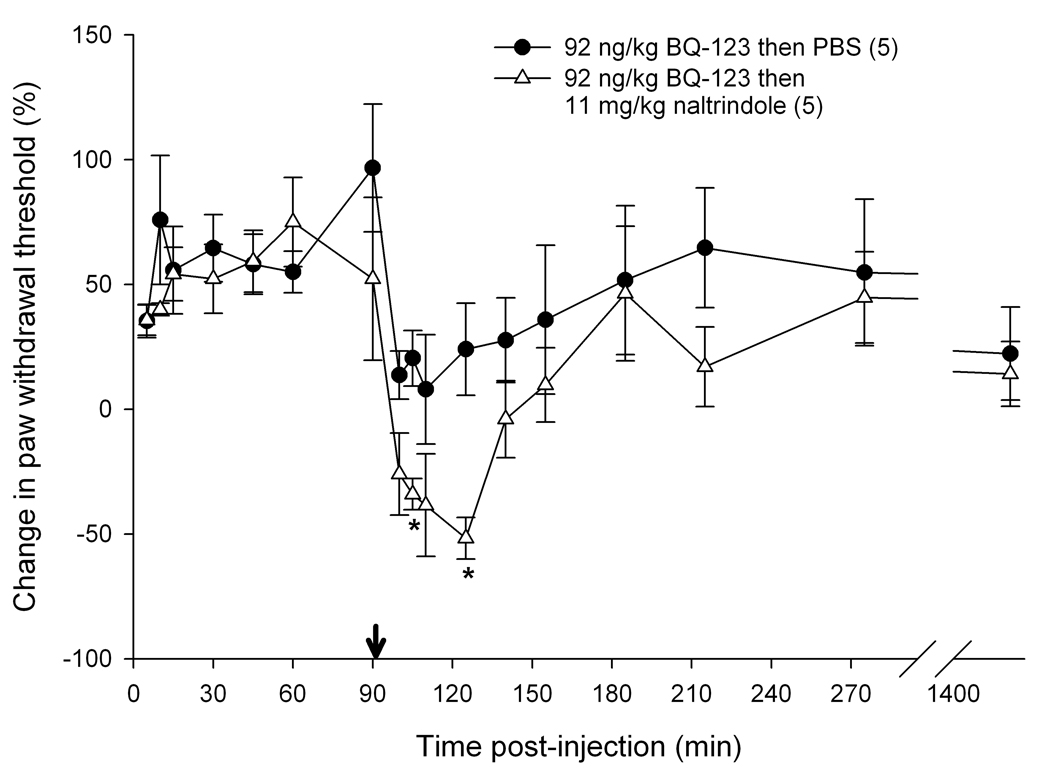Figure 5.
Mean percent change in paw withdrawal threshold of the right hind paws of cancer-inoculated animals injected with ET-AR antagonist (92 ng/kg BQ-123) followed by administration of different peripheral opioid antagonist drug or PBS alone (indicated by ↓). (A) Paw withdrawal for SCC group which received naloxone methiodide at 90 min after BQ-123 injection (n = 5) compared to PBS control group (n = 5). The mean withdrawal threshold for the naloxone methiodide group had a significant negative change at about 35 min following injection of the peripheral non-specific opioid receptor antagonist (t = 125 min), compared to the PBS control group (p = 0.007). (B) Paw withdrawal for SCC group which received CTOP at 90 min after BQ-123 injection (n = 5). CTOP injection resulted in an immediate but short-lived significant reduction of the mean paw withdrawal threshold ( p < 0.001) at t = 100 min compared to the SCC group which received PBS control administration. (C) Paw withdrawal for SCC group which received naltrindole at 90 min after BQ-123 injection (n = 5). The mean paw withdrawal threshold for the naltrindole group had significant negative changes at t = 105 and 125 min compared to PBS control administration (p = 0.003 and 0.006, respectively). (D) Paw withdrawal for SCC group which received nor-binaltorphimine at 12 hrs prior to BQ-123 injection (n = 5). nor-BNI administration had no significant effect on the mean paw withdrawal threshold compared to the PBS control group. [* indicates significance]




